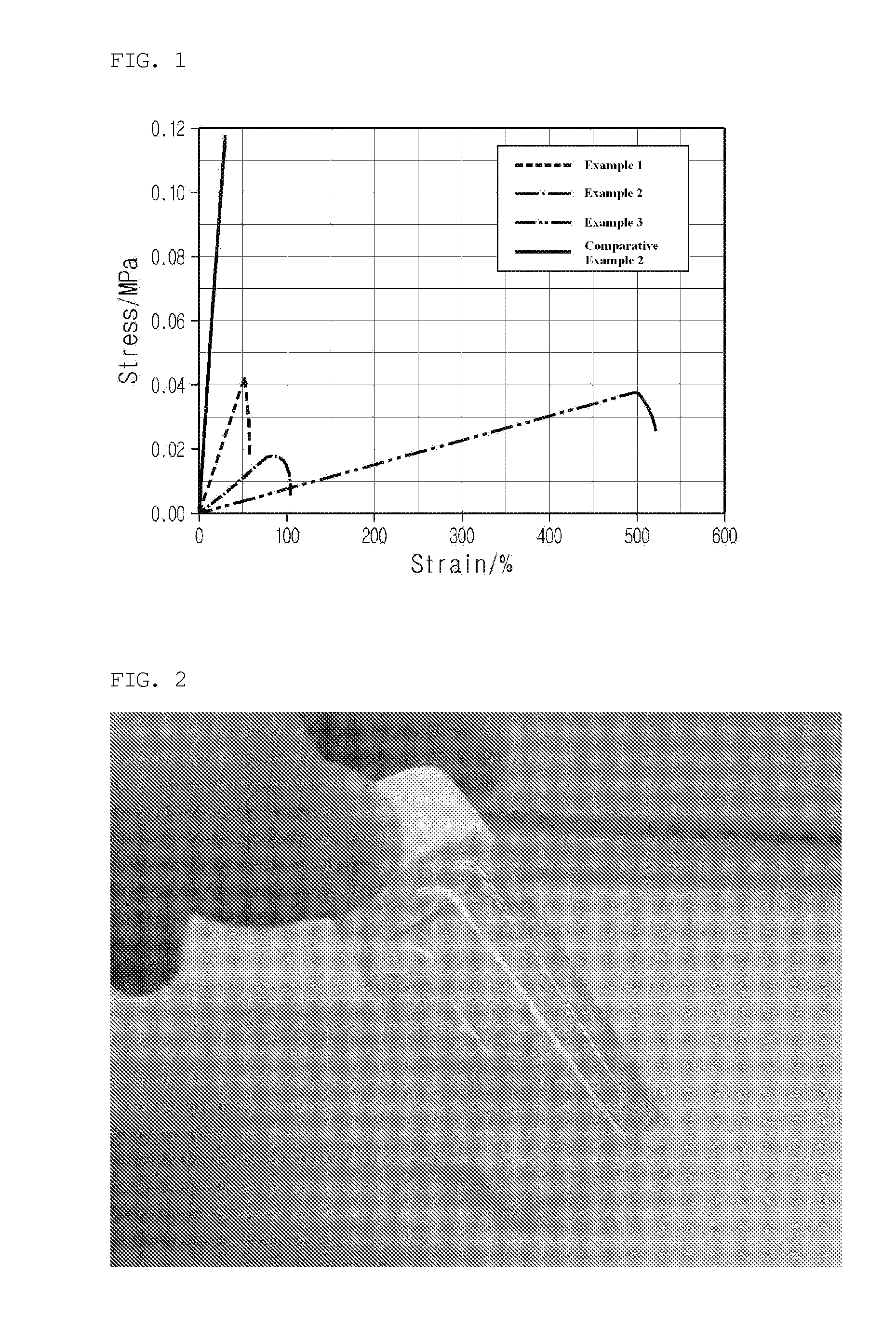Electrolyte for electrochemical device, method for preparing the electrolyte and electrochemical device including the electrolyte
a technology of electrochemical devices and electrolyte, which is applied in the direction of non-aqueous electrolyte cells, sustainable manufacturing/processing, and final product manufacturing, etc., can solve the problems of increasing the possibility of evaporation of organic solvents, increasing the temperature of batteries, and increasing the demand for secondary batteries. , to achieve the effect of high mechanical strength, high ionic conductivity and easy chang
- Summary
- Abstract
- Description
- Claims
- Application Information
AI Technical Summary
Benefits of technology
Problems solved by technology
Method used
Image
Examples
example 1
Preparation of Network of Non-Crosslinked Polymer and Crosslinked Polymer Structure / Plastic Crystal Matrix Electrolyte
[0050]50 parts by weight of succinonitrile, 15 parts by weight of polyethylene oxide, and 35 parts by weight of polyethylene glycol dimethacrylate (PEGDMA) having a molecular weight of 400 g / mol were mixed. Lithium bis-trifluoromethanesulfonylimide as a lithium salt was added to the mixture in such an amount that the molar ratio of the lithium salt to the ethylene oxide units of the PEGDMA was 1:8. The resulting mixture was homogenized. Benzoin as a UV initiator was added in an amount of 3 wt %, based on the weight of the PEGDMA.
[0051]Thereafter, the mixture was cast on a glass plate and irradiated with UV for 1 min. As a result of the polymerization, an electrolyte was produced in the form of a membrane.
examples 2-3
Preparation of Networks of Non-Crosslinked Polymer and Crosslinked Polymer Structure / Plastic Crystal Matrix Electrolytes
[0052]Electrolytes of Examples 2-3 were produced in the form of membranes in the same manner as in Example 1, except that the mixing ratios of succinonitrile, polyethylene oxide and polyethylene glycol dimethacrylate were changed to 50:25:25 and 50:35:15, respectively.
fabrication example 1
Fabrication of Half Cell
[0056]The electrolyte membrane produced in Example 3 was inserted between tin-plated copper as a working electrode and lithium metal as a counter electrode to fabricate a coin-type half cell.
PUM
| Property | Measurement | Unit |
|---|---|---|
| constant voltage | aaaaa | aaaaa |
| polymer structure | aaaaa | aaaaa |
| weight ratio | aaaaa | aaaaa |
Abstract
Description
Claims
Application Information
 Login to View More
Login to View More - R&D
- Intellectual Property
- Life Sciences
- Materials
- Tech Scout
- Unparalleled Data Quality
- Higher Quality Content
- 60% Fewer Hallucinations
Browse by: Latest US Patents, China's latest patents, Technical Efficacy Thesaurus, Application Domain, Technology Topic, Popular Technical Reports.
© 2025 PatSnap. All rights reserved.Legal|Privacy policy|Modern Slavery Act Transparency Statement|Sitemap|About US| Contact US: help@patsnap.com



